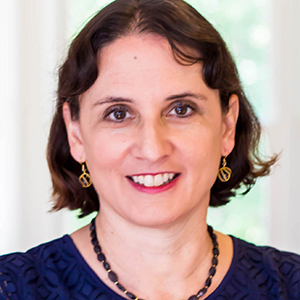An artful sabbatical
I was on sabbatical for the 2020-2021 academic year, and one of my goals was to include more art in my life. My 12-year-old son has attended art camps and taken many lessons, and I always wished I could take classes with him, but during a typical academic year, it’s hard to find time to focus on art.
More than a dozen years ago, I signed up for my first ceramics class on a whim at a time when I was sad about my mother’s recent death as well as other personal issues. It turned out to be a painting class; the ceramics were already made, and we just decorated them. It was fun and relaxing, but I really wanted to get my hands on the clay itself, not just a premade bowl or dish.

I discovered an art studio closer to my house and took a few pottery classes, but life got fuller with the birth of my son, and I stopped. A few years ago, I started taking classes off and on again. During my sabbatical, I decided to take classes consistently and work on improving. Like so much in life, pottery takes a lot of practice to get better.
Pottery is one of the few things I can do to let go of external stressors or problems I am trying to solve — and the pandemic sure brought extra worries. I sometimes take yoga classes to stretch and help with stress, but I struggle to mediate during Savasana; I’m already thinking about the next few things I need to do when it’s time to get up off the mat. I am sure there is an art to relaxing during Corpse Pose, but I haven’t mastered it, so I prefer to relax by focusing on creating something. With pottery, I am able to focus on the task at hand. And working with clay, especially the glazes, is all about experimentation, which parallels my scientific interests.


During my sabbatical year with art, I took a number of pottery classes (both wheel and hand building).
When the local art studio closed due to the pandemic, my teacher offered classes at his home studio to keep us engaged. (We did this safely with masks, distancing, and small classes.) The hand-building classes opened up more levels of creativity for me than wheel work. For example, I made a vase with square corners and a few charcuterie platters. But I also got better at the wheel and felt that some of my pieces were good enough to give as gifts to friends and family members.
Other artists visited my teacher’s studio to offer specialized pottery classes on different techniques or specific projects — from hand building a delicate porcelain vase to making a decorative tile with a relief sculpted bird as well as fun seasonal projects like pumpkins in October. I learned about surface treatments of clay such as slip trailing, the application of watered down clay, often containing colorant, onto leather-hard clay to add dimension after firing, and sgraffito, a form of decoration that involves scratching a design onto a dark coated surface.
I really enjoyed sgraffito, even though it takes planning and lots of patience to do well. Besides getting out of the house, I enjoyed meeting new people and seeing what others in my classes were creating.
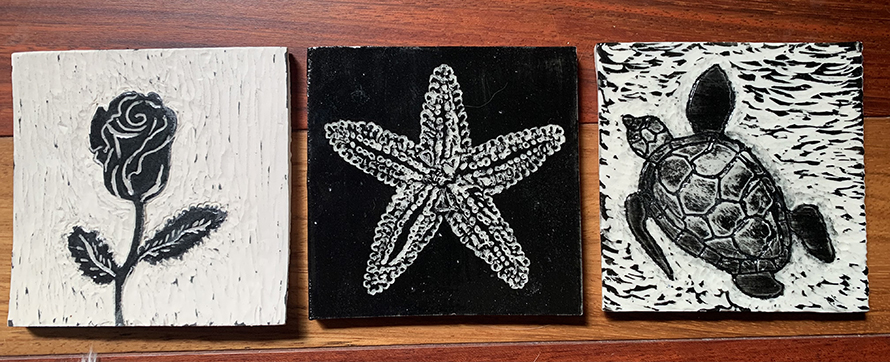
I also took free online classes in drawing, watercolor and acrylic painting through my local library and an art studio. I discovered that I liked watercolor much better than acrylic painting; I enjoy the fluidity and use of water to dilute and blend colors, and the final product appeals more to me. I bought myself a good set of watercolor pigments and a few high-quality brushes for a Christmas present.

To end my sabbatical year, I did a raku workshop with my son just before the new academic year started; this was something I had wanted to try for a long time. Raku firing is a reductive process; pieces are taken out of a kiln when they are red hot and placed in closed containers with sawdust to starve them of oxygen. People usually do this outdoors in kilns that might be just glorified garbage cans.


This type of firing involves so many variables that you really don’t know what you will get until you cool the pieces with water and wipe off some of the black from the firing.
My son and I created some very colorful fish and small cups. It seemed somehow fitting to end the year with a lot of fire and smoke and the excitement of not having a clue how things would turn out.
I am back on campus with a full teaching load and struggling to find time to keep up with grading, course preparation, the laundry and grocery shopping. But I hope to continue to create art in the future; the stressors never go away, but keeping them at bay and manageable is a lifelong skill. Plus, I feel joy when I look at something and think, “Wow, I actually created that.”
Enjoy reading ASBMB Today?
Become a member to receive the print edition monthly and the digital edition weekly.
Learn moreGet the latest from ASBMB Today
Enter your email address, and we’ll send you a weekly email with recent articles, interviews and more.
Latest in Opinions
Opinions highlights or most popular articles
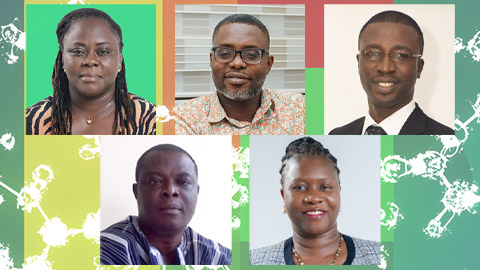
Getting to know scientists half a world away
In a program at Wellesley College, students interview and write about researchers at a university in Ghana.

Let’s make ASBMB awardees look more like BMB scientists
Think about nominating someone outside your immediate network.
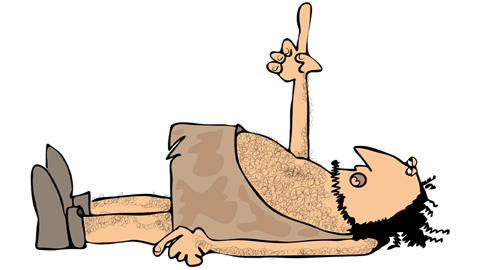
A paleolithic peer review
You might think review panels have only been around for the last century or so. You would be mistaken.

Early COVID-19 research is riddled with poor methods and low-quality results
The pandemic worsened, but didn’t create, this problem for science.

So, you went to a conference. Now what?
Once you return to normal lab life, how can you make use of everything you learned?
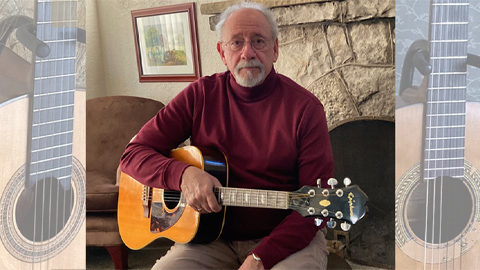
My guitar companion
A scientist takes a musical journey through time and around the world.

